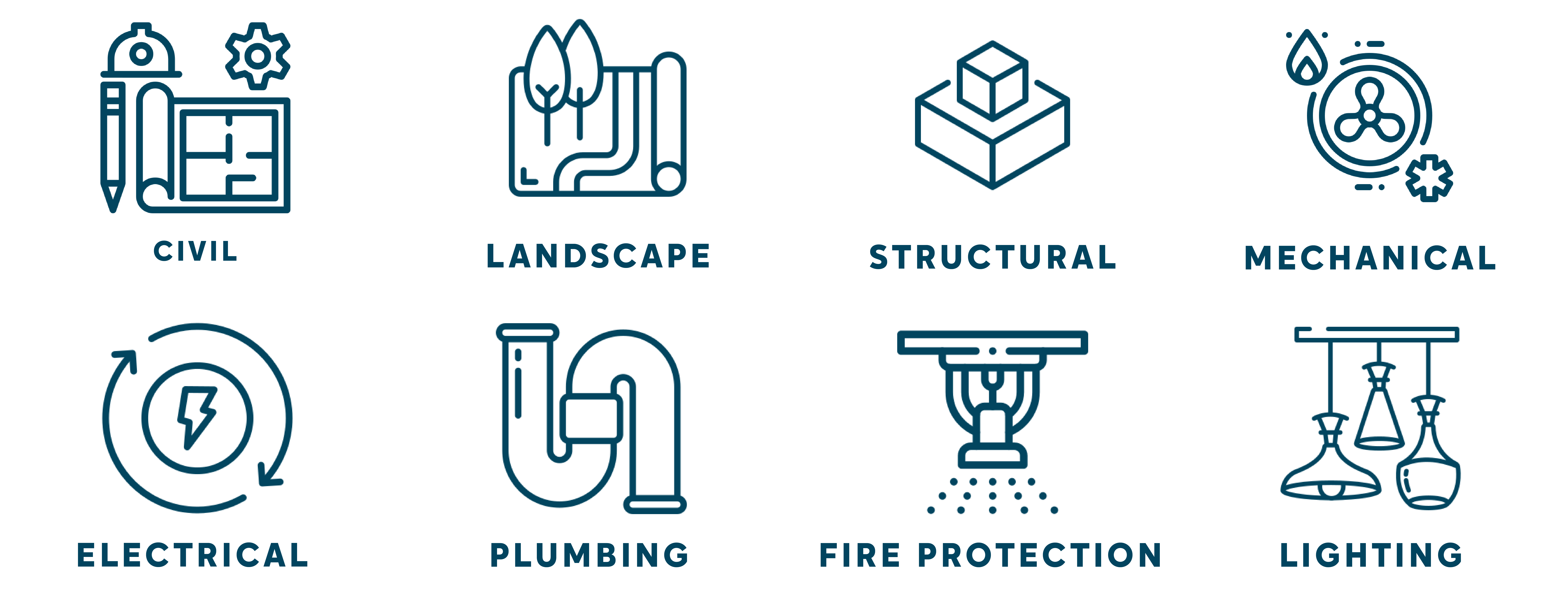Energy efficiency is no longer just a nice-to-have; it’s a must. Every Harwood engineering discipline plays a role in designing buildings and landscapes that consume less energy and contribute to a greener and healthier planet. Here’s a look at how the various disciplines deliver on minimizing energy consumption:
Civil Engineering
Civil engineers integrate renewable energy solutions into site designs. They collaborate closely with other disciplines to seamlessly incorporate systems such as solar panels into the overall infrastructure. Additionally, civil engineers emphasize sustainable stormwater management, which directly impacts energy efficiency. Improved stormwater systems reduce the strain on municipal infrastructure, leading to lower energy consumption for water treatment and distribution.
Landscape Architecture
Landscape architects play a critical role in energy conservation through strategic design. By positioning deciduous trees to provide shade in summer and evergreen trees to block winter winds, they enable passive heating and cooling for buildings. Additionally, selecting native, drought-tolerant plants helps conserve water and lowers the energy footprint of a property. Using locally sourced materials further reduces transportation emissions while maintaining an appealing aesthetic.
Structural Engineering
Structural engineers focus on long-term planning and designing durable and adaptable buildings for future energy technologies. For example, structures can be designed to accommodate solar panels or be repurposed from office spaces into green technology labs without requiring extensive modifications. This approach minimizes the need for demolition or significant retrofits, conserving resources and reducing energy waste. The goal is to create buildings that are future-proof and environmentally efficient.

Mechanical Engineering
Mechanical engineers minimize energy consumption by designing and optimizing HVAC systems. They work closely with building owners to understand objectives such as reducing carbon footprints and improving energy efficiency. Engineers ensure these systems operate efficiently while meeting budgetary and client requirements by designing heating, ventilation, and air-conditioning systems that prioritize performance and sustainability. The outcome is high-performance HVAC solutions that maintain occupant comfort while minimizing energy consumption and environmental impact.
Electrical Engineering
Electrical engineers initiate energy-savings by designing systems incorporating renewable energy sources, such as solar panels, into buildings. These systems generate on-site clean energy, reducing reliance on traditional energy sources. Last year, over one million watts of solar power were installed with the expertise of Harwood professionals. By optimizing energy use and focusing on efficiency, they help minimize carbon emissions and advance sustainable energy solutions.
Plumbing (and Fire Protection) Engineering
Plumbing engineers improving energy efficiency by specifying low-flow fixtures, as they contribute to significant water conservation. This is important because the processes of pumping and treating water consume substantial amounts of energy. Reducing water usage directly decreases the demand on energy resources. These carefully implemented measures ensure a more sustainable and efficient water and energy use.
Whether it’s strategic tree planting or cutting-edge HVAC systems, every discipline brings something crucial to the table when it comes to minimizing energy consumption. They work together like pieces of a puzzle, designing buildings and landscapes that don’t just meet today’s needs but are ready for tomorrow’s challenges. When you think about it, energy-efficient design isn’t just good engineering; it’s a smarter way to build a better future.
